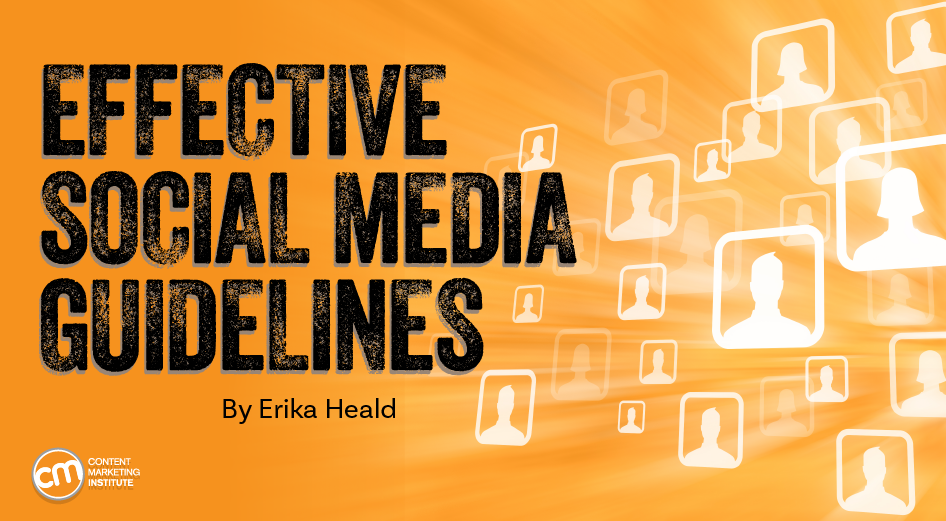MARKETING
A Beginner’s Guide to Inbound Links: What Are They & How to Get More of Them

Inlinks, backlinks, inbound links.
They all mean the same thing – someone else’s web property is linking to yours.
A hyperlink from one webpage to another.
A simple, integral part of the internet.
Spend any time in the SEO industry and you would think links directly equal profit.
Some SEO pros spend their entire careers specializing in obtaining links.
Why are they so sought after and how can you get them?
Why Inbound Links Are Important
PageRank
To understand why links from other webpages are so important to SEO professionals we need to look at Google’s PageRank algorithm.
PageRank was developed to help Google understand how a webpage fit into the rest of the web.
In a now archived Google guidance page, PageRank was described as working
“…by counting the number and quality of links to a page to determine a rough estimate of how important the website is. The underlying assumption is that more important websites are likely to receive more links from other websites.”
This admission from Google that links are important to its ranking process is what spurned an entire industry to go chasing after them.
Other Search Engines
Google is not the only search engine that uses inbound links as a ranking signal.
Bing’s Webmaster Help and How-To guide mentions how the search engine perceives links:
“Bing prefers to see links built organically. This essentially means the links are built by people linking to your content because they find value in your content. This is an important signal to a search engine because it is seen as a vote of confidence in the content.”
Yandex also considers inbound links within its algorithm.
It gives guidance in its support documents on the importance of links and how they are gained.
The Perceived Power of Links
When surveyed by Moz in 2015, over 150 SEO professionals reported on what they believed to be the top factors that influence a page’s ability to rank well.
The respondents rated “domain level, link authority features” as the most influential factors, followed by “page-level link metrics.”
Although this is a study based on the opinions, it does go to show the perceived importance of links within the industry.
What Makes a Link Valuable
Not every link is created equally. That is, not every link will be as useful to a site as it would be to another site.
This is because of the ways the search engines use links to determine the relevance and authority of a webpage for a given search.
Importance
Google states in its help documentation:
“Google interprets a link from page A to page B as a vote by page A for page B. Votes cast by pages that are themselves “important” weigh more heavily and help to make other pages “important.””
A link from a website that is considered important will be of more benefit to your site than one from a website than a low importance one.
There is however a caveat to this. Relevance.
Relevance
It is not just the “importance” of a page that determines how useful it is in determining the rank of the page it links to.
The contents of the linking page will also have an impact.
Ensuring the website has a similar or related topic to the page that is being linked to will help reinforce the subject of that page.
This in turn can help it to be perceived as more relevant to search queries about that topic.
A Word About Metrics
There are many tools available that contain metrics to help you gauge the importance of a page.
You may have come across scores for “domain authority”, “page authority” and “domain rating” before.
These are the tool manufacturers’ attempts to quantify how the search engines perceive the importance of a linking page.
They can be useful guides but it is crucial to remember they are not used or recommended by the search engines themselves.
There is no longer any publicly accessible score for how Google rates a page’s authority.
Why Is Gaining Links Dangerous?
Search Engine Guidelines
Although links are a good way for search engines to get third-party verification on the importance of a page, they are also easily manipulated.
Over the years the voting system became compromised by link purchasing, link exchange, and other schemes.
Due to this, the search engines had to become proactive in identifying where links had been gained for the purpose of higher rankings.
Google has strict guidelines on what is considered a manipulative link. As does Bing, and Yandex.
The search engines do not want links built that will artificially give the impression the site is more relevant and important than it is.
The penalties for engaging in link building that contravenes the guidelines can be severe.
In some instances, entire websites might be removed from the search engine results pages.
This makes link building a contentious subject.
The mere practice of trying to increase links for the sake of rankings is technically against the guidelines of most major search engines.
Links Change Over Time
The other important point to note is that the value of a link changes over time.
For instance, what if the page that links to yours change its content?
The relevance of that link to your site might increase if the content becomes more aligned with yours.
If a website linking to yours acquires more relevant links to itself it might be perceived as even more of an authority by the search engines.
This can make the link to your site even more powerful.
The opposite can happen too of course.
What if the site linking to yours gets hacked?
Suddenly the search engines’ concept of what that site is about will change, so will its relevance to your site.
Good Ways to Gain Links
The all-important question is, if links are so powerful how do you get more of them?
Below is a quick overview of some popular tactics to gain new links.
However, link building needs to be a strategy, not a tactic.
It should be a mix of great content marketing and relationship building.
This article is an introduction to inbound links.
I don’t have enough time to go into detail about how to create an effective link building strategy.
For more information on that you should take a look at these articles:
Common Link Building Tactics
New Content
A good way to build links to your website is by creating content that other sites find informative, interesting, and link-worthy.
Creative campaigns that are designed first as content marketing, second as link-magnets are an effective tactic.
These creative campaigns take many forms.
Write-ups of interesting research, interactive media, and anything that you could see being shared well on social media have the potential to be picked up by digital publishers and linked to.
Be a Source of Authority
A quick check of any thought leader within an industry is likely to reveal a wealth of links pointing to their site.
Why?
Because they are being referenced by other publications.
Consider Search Engine Journal itself.
The backlink reporting tool I use suggests the website has in excess of 14 million links pointing to it. It is often used as an authoritative source in other publications.
Digital PR is an example of effectively leveraging expertise.
Contacting journalists as a source of information they can use within a story can often lead to your website being linked to.
This is especially true if you have an asset on your website that the journalist is referencing in their story.
Existing Links
Often an easy place to start with building links is making the most of existing ones.
Broken Links
Using a backlink checking tool such as Ahrefs, SEMrush, or SE Ranking it is possible to see where links are coming into your website.
These tools will also tell you if those links are still live or no longer work.
If you see that you used to have a website linking to yours but the link has since broken then there is a possibility it could be reactivated.
For instance, when a website’s content changes links are often taken out.
Sometimes the hyperlink itself is removed even though the link is supposed to be there still.
In these instances, you might find it fruitful to contact the owner of the site and ask if the link can be reinstated.
Links to 404 Pages
Over time as you change and grow your website you might let pages return a 404 status code.
If you have links from other sites pointing to these pages then the value of those links is lost.
Regularly checking your site to see if pages that have a 404 status code have links pointing to them, and redirecting those pages, can retain the value of the link.
Existing Relationships
Wherever possible leverage existing relationships.
The likelihood is that if you have an existing relationship with a publisher it is because your organization has some relevance to theirs.
This means a link from their site to yours might actually be beneficial to their readers. As such, the link makes sense.
Local Clubs
Do a lot of your team play for a local club? Do you participate in charity events?
There might be organizations you are already involved in where it would make sense for them to link to your site.
A word of caution:
If you sponsor a local football team and in exchange, they link to your website you are paying for a link.
It is highly possible that the search engines will be able to use the context of the page the link is on to deduce it is a link to a sponsoring organization.
In that instance declaring the link as sponsored using rel=”sponsored” as an attribute for the link.
Otherwise, you may fall foul of their algorithms designed to detect link manipulation.
Manufacturers
Are you an authorized retailer of a brand’s products?
Often brands will list their retailers on their site to help their clientele find a local distributor.
Make sure you are included on that list.
It is a highly relevant link to your site and should also refer converting traffic to your site.
What Not to Do
This could fill several articles.
There are many, many old link building techniques that can be damaging to your site.
For a starting guide on where not to look for link building opportunities, I want to direct you to Brain Harnish’s article: 10 Bad Links That Can Get You Penalized by Google.
I also want to make a plea on behalf of all website admins who manage popular websites.
Don’t email them asking for a link.
They get hundreds of emails a month asking for the same.
Just because they used to link to your competitor’s infographic does not mean they want to link to your infographic instead.
They might if your infographic presents more up-to-date and relevant research.
They won’t if it’s essentially the same information in your company branding.
Be wise in how you reach out to publishers. Build relationships where possible instead of cold emails.
Conclusion
Inbound links are still considered to be highly valuable in SEO.
Good inbound links are hard to build.
If they are easy then they are unlikely going to help bolster your site’s perceived authority.
At worst, they can lead to a penalty.
Link building is a hotly debated topic in the SEO world. Keep in mind that the search engine guidelines around link acquisition are all quite clear.
Links should be gained by your site naturally. Really, without interference from the site’s owner.
If you are embarking on a link building campaign then make sure the links you acquire genuinely add value to the readers of the linking sites.
Remember too that the search engines are forever tightening the net on spammy links.
Their ability to detect manipulative links grows stronger.
What tactics might be flying under the radar now might not for long.
More Resources:
MARKETING
Updates to data build service for better developer experiences

Optimizely Feature Experimentation users can now benefit from an average of 87% faster data file updates. The ability to generate data files in a faster and more predictable manner enables our customers to make updates to feature flags and experiments more quickly and reliably.
- Datafile build service – Performance, stability
- Webhooks by environment – Lower latency across all environments. Push notification that a new datafile is ready
- Secure environments – Security
Key features
- Smoother workflow
It lets you update feature flags and experiments faster and more consistently as a seamless workflow step. - Better developer experience
Developers can expect faster and more predictable feedback when configuring feature flags during local development. - Faster execution
Product teams benefit from “kill switches” to roll back problematic features and flawed experiments to protect user experience and conversion rates.
Finally…
Speed, performance, and usability are key to delivering a better experience, and as such we are always striving to improve the performance of back-end services. Our improved datafile build service enables you to deliver feature flags and experiment changes to your end-users more quickly and reliably.
Optimizely Feature Experimentation generates a JSON datafile that represents the state of an environment in a customer’s Feature Experimentation project, this datafile is polled for and consumed by our SDKs to enable user-level decisions and tracking.
With our new datafile build service, Feature Experimentation customers will experience better performance and reliability when delivering feature flags and experiment changes to end-users.
MARKETING
The Ultimate Guide to Email Marketing

Email is more than just an informative message; it is a sales tool that helps the brand reach its potential customers. That’s why email marketing continues to find a place in many brands’ marketing strategies. Also considered the most effective medium to reach a potential audience, email marketing is estimated to proliferate to more than 370 billion emails per year by 2025.
Statista’s recent report revealed that there would be a rapid and consistent increase in the use of email marketing as a promotion tool. Another report published on Financesonline.com projects that there will be 4.5 billion email users by 2024 compared to 4 billion in 2020. The rapid increase in the use of email has forced businesses to incorporate them into their marketing strategies.
Therefore, companies that want to attract customers to their brand organically must be aware of the core fundamentals of email marketing. Therefore, in the succeeding part of the article, we will understand in-depth email marketing. Everything will be discussed in the following paragraphs, from its meaning to tools.
The Ultimate Guide To Email Marketing
Experts believe that customers love to hear from the brand they love; that’s why they choose to subscribe to the monthly and weekly newsletters that companies send to make them aware of new products, among other things. So, to understand how to formulate an effective email marketing message, it is important to understand what email marketing is.
What Is Email Marketing?
Often digital marketing definition includes email marketing in it. So, what is email marketing? It is a process that revitalizes email as a promotion and advertising tool. Through email marketing, potential customers learn about new products, services, discounts, and offers, among other things. Therefore, it is an effective marketing medium that bridges the gap between the brand and the customer. It also allows brands to communicate with customers directly.
Due to its umpteen benefits and easy-to-use interface, email marketing has become one of the most popular marketing strategies globally. Large, medium or small businesses can implement email marketing into their brand promotional strategy because of the reasons listed below.
Why Is Email Marketing Important?
- It is a cost-effective marketing strategy compared to outdoor, news, and television advertisements.
- It has a higher return on investment (ROI) and helps brands reach a wider audience.
- It is an effective medium to reach new customers with minimal resources.
- It easily integrates into different marketing channels.
- It offers personalization by assisting in creating targeted messages for specific customers.
Email marketing is a powerful promotional tool that helps brands successfully persuade their customers. Its unique features and characteristics force customers to take action on them by reading, deleting, or archiving them. Therefore, it is too hard to avoid email. To effectively formulate an email marketing strategy, a marketing manager should follow a few steps that we will be discussing in the next part of the article.
How To Formulate An Email Marketing Plan?
Follow these steps to formulate an effective email marketing plan successfully:
- Understand your audience’s needs
- Include a call-to-action
- Decide the content of the email
Formulating an email marketing plan is an elaborative process requiring the marketing manager to perform various steps to understand the target audience. Once you have understood your audience’s needs, it is easy to formulate the content of the email. Unfortunately, brands often concentrate on writing email content that aligns with the needs of their audience. It is effective but compromises the organization’s goal. So, while formulating an email marketing plan, try to integrate business goals and audience needs into the strategy to get more effective results.
Different types of email marketing incite different results. So, depending on the market, audience, and business size, a company can decide the email marketing type. Below are some of the popular types of email marketing prevalent in the current times.
What Are The Types Of Email Marketing?
• Newsletters
Newsletters are a significant way of informing the audience about new products or services launched by a brand. In addition, it is used to help the users understand the brand better. Therefore, they follow a strict delivery schedule, which cannot be shifted or changed frequently.
• Welcome emails
Welcome emails are sent to new customers or potential users whom the brands wish to turn into consumers. This type of email marketing aims to educate audiences about the brand, its products, services, and brand goal, among other things.
• Promotional emails
Promotional emails’ main focus is to persuade customers to buy a product or service. Therefore, they are designed to influence the audience to buy the product.
• Sponsorship emails
Brands can use different types of email marketing to reach the audience. Sponsorship email is summarized as the process of promoting a product and service on another brand’s email ad space. In addition, it is used to attract new customers to the products.
Email marketing is a marketing activity that can be intimidating and strenuous for marketing managers. Therefore, brands use many online tools to automate and classify email marketing processes. In the last part of the article, we will discuss the tools of email marketing that helps brands promote their product or service effectively.
What Are The Tools Used For Email Marketing?
Here are some marketing tools that brands commonly use.
- Mailchimp
- Campaign Monitor
- Sendinblue
- Easysendy
- SendPulse
Besides email marketing, there are different types of digital marketing strategy that helps in reaching the targeted audience effectively. To understand the intricate details of different digital marketing strategies, marketing managers can take digital marketing certification courses offered by Emeritus India in association with renowned Indian and international universities.
MARKETING
How To Protect Your People and Brand

Your lack of social media guidelines could discourage employees from becoming brand advocates and even applicants from joining your company. I speak from personal experience.
When I first joined LinkedIn, my profile said I worked for a “Bay area Fortune 500 financial services company” instead of noting its name and linking to the company page. Soon, many of my colleagues’ profiles said the same thing.
You see, our organization was trying to figure out its social media policies within the confines of a highly regulated industry. It blocked access to any website with a social component — including YouTube. When employees were asked about using social media on their own time and devices, the company’s initial guidance was they didn’t want them using social media at all.
Well, that wasn’t going to happen. Instead, thanks to lengthy conversations with my legal and compliance colleagues, I hit upon a solution: I scrubbed any mention of my employer in all my public profiles.
Why employee social advocacy matters
Why do employee brand advocates matter? Because people are increasingly wary and distrustful of brand and government claims and prefer input from their peers.
The Edelman Trust Barometer underscored this message. In its 2024 iteration, it found people were concerned that the media (64%) and business leaders (61%) are purposely trying to mislead people by saying things they know are false or gross exaggerations.
This shift in trust becomes a competitive advantage for brands that cultivate thousands of eager brand ambassadors, but this requires documented employee social media guidelines to not only allow your team members to thrive on social but to protect your brand from legal risks.
Take a responsible approach to workplace social media policies
Whether you like it or not, employees will talk about your company on social media, and it’s their federally protected right to do so.
Many businesses react with fear and develop extensive restrictions around what employees can or cannot say online in their company social media guidelines. They require employees to agree to a list of don’ts and end the conversation.
However, innovative companies increasingly prioritize employee advocacy, seeing both employee retention and bottom-line advantages. A recent case study showed tech leader Salesforce activated about a third of its 73,000-person employee base as brand advocates, resulting in a 2,000% ROI on its social ambassador program.
Social media guidelines for employees serve as guardrails for online activity and show employees you want them to be engaged online, helping to build on your company’s social media success.
Follow the essentials for your guidelines
The length of your company’s social media guidelines is less important than their accessibility and quality. Ensure any employee can understand the guidelines. Create one-pagers or cheat sheets for specific activities, like training or unique campaigns.
At a minimum, all employee social media guidelines should include the following elements:
- Brand’s purpose on social media — Document the brand’s purpose for each social platform. Whether for recruitment, content amplification, customer advocacy, etc., the guidelines should explain why the company exists on each channel and how employees can support that purpose.
- Company style guide — List any trademark needs and spelling of company products and services so that employees correctly present the brand. You should also define your brand personality and any language considerations.
- Access to shared brand asset folder — Create a central folder employees can access for company logos, how-to’s, shared FAQs, branded profile headers for social sites, and more. Consider creating a list of preferred hashtags and their purposes, especially with company hashtags such as Dell’s #IWorkForDell or IBM’s #ProudIBMer. Keeping this information in one place increases the likelihood that employees will stay on brand.
For a deeper look at these areas, including resources to help you define your social media goals, check out my article, Why Social Media Guidelines are the Key to Unlocking Employee Brand Advocacy.
Use guidelines as a brand defense
The stakes can be high for enterprises when employees use their social media channels in unapproved ways, and savvy companies know the importance of developing extensive social media guidelines.
Get ahead of potential issues and address these all-too-common social media pitfalls in your employee social media guidelines:
- Legal concerns — Make it incredibly clear at the start of all projects what is and is not approved for social sharing. Also, while many people differ on the use of “views-are-my-own” disclaimers, large enterprises should discuss whether they want employees to have such a clause on their accounts.
- Unsanctioned brand accounts — When your company spans your country or the globe, employees may create localized accounts. Address this by listing all official corporate accounts in your social guidelines and asking team members to use only those for brand-related matters.
Consider having a social media request form that allows employees to suggest new accounts or content. This way, their enthusiasm can be better harnessed with a conversation versus an email request to delete the rogue account.
- Departed employees — As employees move on to different career opportunities, they may forget to update their profiles to note they are no longer with your company. This could cause confusion when they start posting content about their new companies or when customers search LinkedIn for staff. While you cannot force individuals to change their social account information, you can at least make the request a part of the exit or off-boarding process.
Enterprise social media guidelines examples
Many brands make their company’s social media guidelines public. These examples can serve as great models for your company’s guidelines. Keep in mind, though, that these are just public-facing documents. The organizations may have more expansive guides for internal audiences.
Each of these three examples has unique elements, but they boil down to address the same point — not everyone knows how to act online.
- Stanford University: These extensive guidelines have a small yet informative section on an individual employee’s social media use. The main points cover how employees are responsible for what they say on social and how they should think about how their social engagement may affect the organization’s reputation. While this may seem general, the policy also links to the university’s information security and privacy policies. What truly sets this social policy apart is its thoroughness in discussing using social on behalf of the organization.
- IBM: What stands out in this guide (no longer available on IBM’s public site) is that employees are clearly encouraged to engage in industry conversations online and have their own blogs. “Bring your own personality to the forefront” is part of the company’s guidelines, with the necessary caveat to not use offensive or harmful language.
- Dell: This policy is distilled into five easy-to-digest bullet points for employees and directs them to the Dell social media team email for additional questions. It tackles the issue of rogue accounts, noting that an account created for Dell may be considered Dell property and that accounts cannot be created to ride on the success of Dell’s corporate accounts.
Educate employees on the social media guidelines
As part of every employee’s onboarding, a member of the social team should discuss the company’s social media policies and guidelines and help any new hires set up their channels in a brand-relevant way.
To maintain and grow awareness of the company’s social media policies, get creative:
- Host lunch-and-learn conversations. These informational meetings allow employees to enjoy their food while you discuss topics relevant to your company’s social media channels. If your company has multiple offices, hold a video meeting. Record the conversation to provide a playback file for those who cannot attend.
- Post social media office hours. If employees are hesitant to ask questions during meetings or regular day-to-day operations, give them a safe place for in-depth, one-on-one time by hosting regular social media office hours. This strategy establishes your social team as a helpful resource rather than the brand police.
- Send social media amplification emails. Email employees regularly to share content you want them to amplify. Include suggested text for easy plug-and-play for busy employees. You cannot rely solely on email, though, as internal emails have an average open rate of 76%.
- Create a social media Slack or Teams channel. If Slack or Microsoft Teams is where work happens in your organization, share all your social content there as well.
- Hold employee meetings. Create regular update/reminder slides employees can include in presentation decks during company all-hands, all-team meetings, or individual group or office meetings.
- Use the company intranet. An intranet can be a great resource for increasing productivity and distributing information to employees. Share updates to the social media policies and use it as a hub for all your social resources.
- Develop training videos. With more internal resources available, enterprises can explore using video to educate employees on topics related to social. Research has found that viewers retain 95% of a message when they watch it in a video compared to just text, so the time commitment to create a video could pay off in message retention.
Continue success with employee social media guidelines
In addition to the core company social media guidelines, ensure that employees can access the brand voice so they can mirror your brand’s language and engage with content that you think best emulates what you want to see your employees doing on social media platforms.
Ongoing monitoring and education are the keys to getting the most out of your guidelines. But with an eager brand advocate base on your side, you’re more likely to see the social ROI you need to achieve your goals.
Updated from a January 2020 article.
HANDPICKED RELATED CONTENT:
Cover image by Joseph Kalinowski/Content Marketing Institute
-

 MARKETING6 days ago
MARKETING6 days agoHow Tagging Strategies Transform Marketing Campaigns
-
SEARCHENGINES7 days ago
Daily Search Forum Recap: May 3, 2024
-

 MARKETING7 days ago
MARKETING7 days agoTinuiti Recognized in Forrester Report for Media Management Excellence
-

 SEO7 days ago
SEO7 days agoGoogle Performance Max For Marketplaces: Advertise Without A Website
-

 SEARCHENGINES5 days ago
SEARCHENGINES5 days agoThe Industry Mourns The Loss Of Mark Irvine
-

 MARKETING4 days ago
MARKETING4 days agoA Recap of Everything Marketers & Advertisers Need to Know
-

 MARKETING5 days ago
MARKETING5 days agoThe key to correcting the C-suite trust deficit
-

 SEO6 days ago
SEO6 days agoWhat Is Social Listening And How To Get Started















